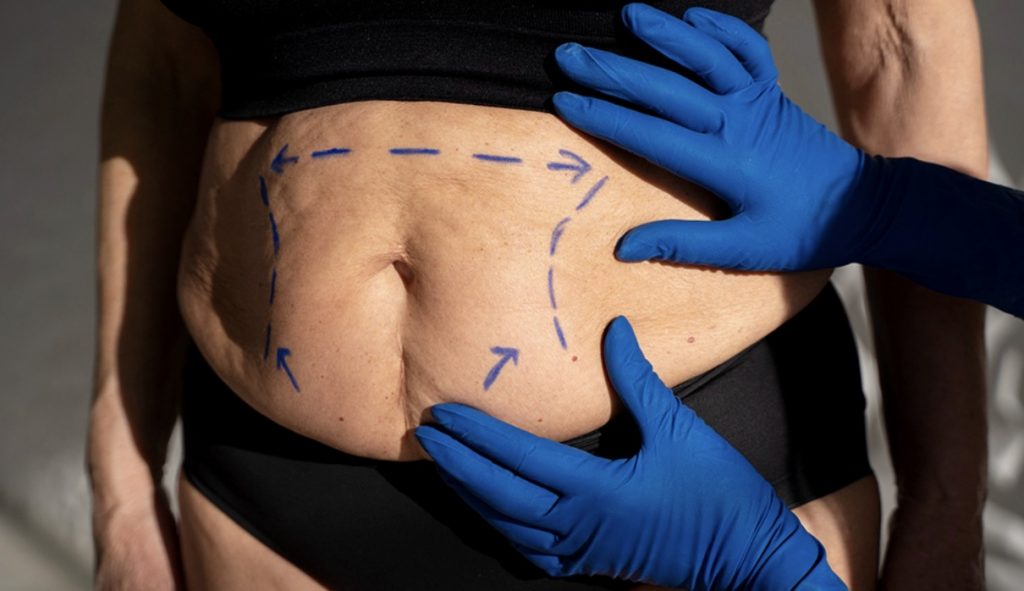If you have been dealing with extra belly fat or sagging skin, you might be thinking about getting a tummy tuck surgery. It is a medical operation that eliminates surplus fat and skin from the belly area while also firming up the muscles underneath. This can give the midsection a flatter, more toned look.
However, it is crucial to comprehend the criteria and demands for eligibility for a tummy tuck before proceeding with the procedure. In this blog post, we will address the primary elements that plastic surgeons take into account when assessing whether a patient is a suitable candidate for a tummy tuck procedure.
Weight and Body Mass Index (BMI)
The patient’s weight and body mass index (BMI) are significant factors in deciding if they are eligible for a tummy tuck. Plastic surgeons typically advise patients to be at or close to their desired weight before having the surgery. Patients with a BMI over 30 may have a harder time undergoing surgery, as excess weight can increase the risk of complications.
Some surgeons will work with patients who are overweight or obese to help them lose weight before the tummy tuck. This may involve a weight loss programme, a diet and exercise plan, or even requiring the patient to lose a certain amount of weight before the surgery can be scheduled.
Skin Laxity and Fat Distribution
The amount of excess skin and fat in the abdominal area is another key consideration for tummy tuck eligibility. Patients with significant skin laxity, sagging skin, or a large amount of abdominal fat are typically the best candidates. Those with minimal skin laxity or small pockets of fat may be better served by less invasive procedures like liposuction.
Tummy tuck surgeons in Sydney will examine the patient’s abdominal area and determine the extent of the excess skin and fat. They may also assess the tone and condition of the underlying abdominal muscles. Patients with severe muscle separation (diastasis recti) are often good candidates for a tummy tuck, as the procedure can help tighten and repair the abdominal wall.
Overall Health and Medical History
Plastic surgeons don’t just focus on the abdominal area when evaluating a patient for surgery. They also carefully consider the patient’s overall health and medical background. The patient must be in generally good health, without any uncontrolled medical issues that could heighten the risks associated with the procedure.
As part of the evaluation process, surgeons will likely require a comprehensive medical assessment. This typically includes blood tests and a thorough physical exam. The goal is to ensure the patient is not at an increased risk of complications like blood clots, wound healing issues, or excessive scarring.
Certain lifestyle factors, such as smoking, can also affect tummy tuck candidature. Surgeons may require patients to quit smoking for a certain period of time before and after the procedure.
Realistic Expectations
Finally, tummy tuck patients must have realistic expectations about the procedure and its outcomes. While a tummy tuck can provide a significant improvement in the appearance of the abdomen, it’s not an immediate solution, and your body takes 6 months for proper healing to get the perfect body they may desire.
Surgeons will want to ensure patients understand the limitations of the procedure, the potential risks and complications, and the recovery process. Patients who have a clear understanding of what to expect are more likely to be satisfied with their results.
Concluding Thoughts
Being eligible for an abdominoplasty requires satisfying various physical, health, and psychological standards. Through comprehending these specifications, individuals can collaborate closely with their cosmetic surgeon to ascertain if the surgery is suitable for them. Having appropriate expectations and dedication to the procedure can assist individuals in reaching their desired aesthetic outcomes and enhancing their self-assurance through a tummy tuck.
